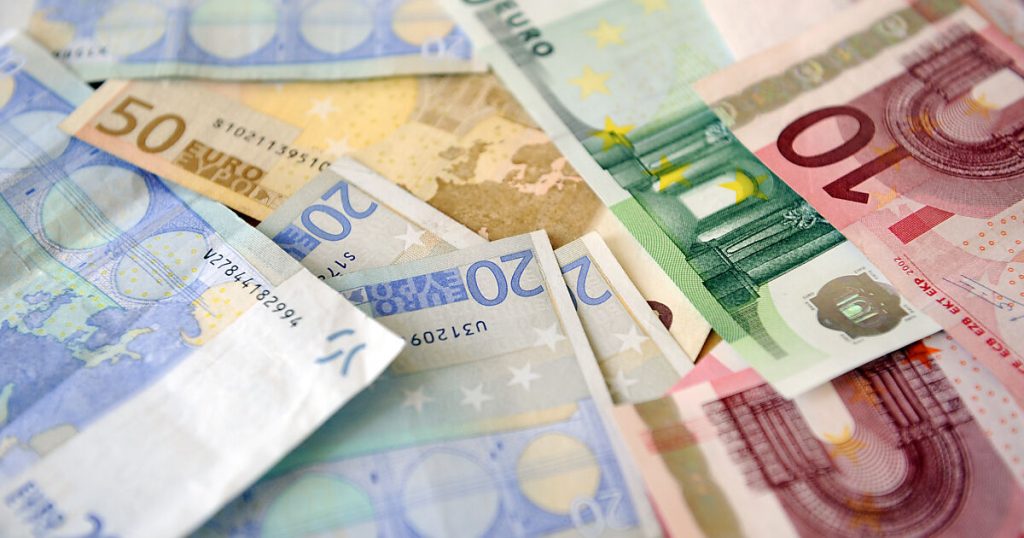The European Central Bank wants to engage citizens comprehensively, and in 2024 the Governing Council must then decide on the production of new banknotes and when they can be presented to the people. But this will take years.
Euro banknotes need a new design
“After 20 years, it is time to take a closer look at the design of our banknotes and design them in such a way that Europeans, regardless of age or background, can get to know them better,” said Christine Lagarde, President of the European Central Bank. The central bank also notes that there is still cash – even if electronic payment methods are on the rise.
For 11 of the then 15 EU member states, the euro became legal tender on January 1, 1999 – initially only electronically, from January 1, 2002 onwards also in the form of banknotes and coins. Today the euro is the official currency of about 340 million people in 19 countries of the European Union.
Anti-counterfeiting protection revised
Notes’ security features as protection against forgery have been revised and expanded in recent years. The second generation of euro banknotes was completed in 2019. The first generation of euro notes are still in force and are gradually being withdrawn from circulation by central banks. The decorations – relatively sober – have been preserved on the notes: buildings that do not actually exist.
What should I do with Euro bills?
When designing Eurobonds in the 1990s, there was little room for national sensitivities, as then-ECB chief economist Otmar Issing described: “When we discussed at the Bundesbank what new Eurobonds should look like, I knew from the start that this was possible. Only with symbols that do not have a national character. ” “Imagine if the French insisted on putting Napoleon on a banknote. The countries that suffered under Napoleon would have protested. There are many examples. Then they chose symbols of a completely neutral nature: bridges. This should be the symbol: the euro builds bridges in Europe.”
When designing new banknotes, European monetary authorities now want to build bridges with consumers. The European Central Bank announced in Frankfurt that the ECB will “work with European citizens in a process that will lead to a final decision in 2024”.
Europeans are included
As a first step, focus groups will be set up to gather opinions from people across the eurozone on possible topics for future euro banknotes. A thematic advisory group, in which an expert from each eurozone country is represented, will propose a selection of new topics to the Governing Council. The ECB will then ask the public for their views on the selected issues. After the drafting process is complete, the Board will decide on the issuance of the new memoranda and the possible dates for their issuance.
The people of Bulgaria and Croatia should participate in this process. Both countries have been trying for years to meet the criteria for admission to the Euro Club. On January 1, 2015, Lithuania was the last country to join the group of countries with the single currency as the nineteenth member.
The design is still completely open
According to the European Central Bank, what a possible new generation of euro banknotes will look like is quite open. Nothing is excluded, one is curious to know what ideas will come from the population. Ultimately, the Governing Council, as the central bank’s highest decision-making body, decides whether existing denominations will remain (5, 10, 20, 50, 100 and 200 euros) and whether future banknotes will provide additional security features.
One thing is for sure: it will take some time before people get used to replenishing euro banknotes. Even in the event of a decision by the European Central Bank in 2024, the revised banknotes will not be issued until years later after extensive testing. Such a project is a logistical challenge in any case: in October 2021, according to the European Central Bank, more than 27.6 billion euros of banknotes with a total value of more than 1.5 trillion euros were in circulation.
(Source: Apa / Reuters / dpa)

“Food practitioner. Bacon guru. Infuriatingly humble zombie enthusiast. Total student.”







More Stories
KaDeWe stops selling meat and sausages
Another earthquake near the giant Naples volcano
Trump wants to block Harris' access to donations